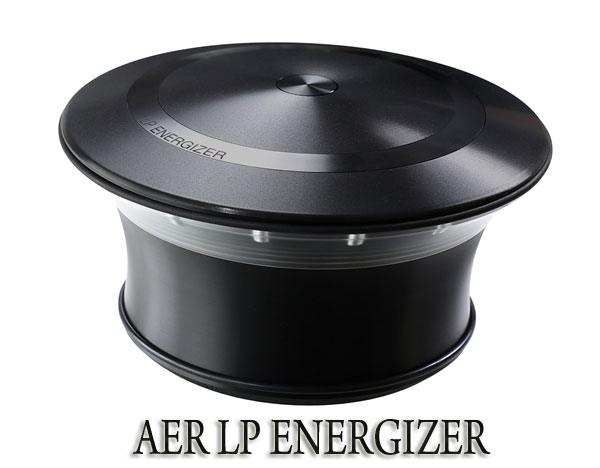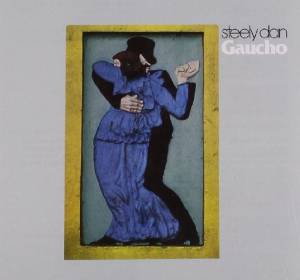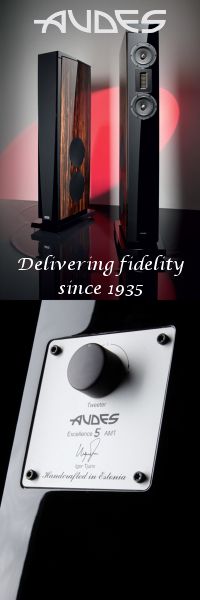AER LP ENERGIZER

To tell you the truth, I really did not want to like the AER LP Energizer. Why? Because, apart from anything else, it will be an additional step in an already long and involved process of preparing every record I play. My immutable routine for each LP consists of first demagnetizing each side on a Furutech DeMag, followed by a quick brush using an anti-static brush, and blasting (2×20 seconds) with a Furutech DeStat. I also clean my stylus after playing each side (a two-step process in itself) and adjust VTA to accommodate the different record thicknesses. Then, I replace the record weight and just before setting the stylus onto the lead-in groove, I activate the Decca anti-static brush (which has a ground wire to drain any remaining static directly into an Entreq Silver Tellus grounding station). All this for twenty or fewer minutes of listening before I have to get up, sleeve up the record, and start all over again. I really, as I mentioned, did not want to like the LP Energizer.
The story of AER/IPC has been oft repeated here in the hallowed pages of Stereotimes, and elsewhere in other reviews. Founder of IPC and inventor Vian Li had, for some time now, created a way that will allow him to use his patented Euphoria Technology to quickly and effectively treat CDs and other equipment – namely the CD Energizer. Vian Li had, in late 2012 or thereabouts, designed and marketed a bigger version of this that could do the same for vinyl records. It was shaped like a turntable itself, beautifully finished in glossy acrylic and crystal accents, and undeniably expensive at US $3900 per piece. A lot of audiophiles around the world found it effective, but dealers started receiving requests from customers for a smaller, more affordable version. Based on customer and dealer feedback, specifically for something that was portable and yet just as effective as the older “turntable” version, Vian Li eventually came up with the final iteration of the LP Energizer you now see in IPC dealers’ stores.
Available in any color as long as it’s black, the form factor of the LP Energizer reminds me of some kind of alien spacecraft or the top of a futuristic skyscraper. It is quite heavy, so my sincere advice is not to drop it on your toes, and it uses the same battery (infused with IPC technology) that will last for about 3000 presses. To use it, one places the Energizer atop a record in the same way that you would place a record weight over the spindle – it does not have to be on the turntable during treatment although many users will probably do it this way – and presses the button in the middle of the top surface. The circle of LEDs will light up, sending the mysterious stuff into your record below. After about 5 seconds, the deed is done. You remove the LPE and replace your record weight, and start listening. It is that simple.
Methodology
To hear the effects of the LPE, I first played each LP without treatment, then stopped the turntable, applied the treatment, and lowered the stylus again. All this without touching the volume control or polarity or any other setting on the preamp, to ensure consistency.
I have a policy of not playing the same record side twice within 24 hours so as not to deform the groove walls through stylus-induced heat. However, to eliminate the possibility of hearing differences due to playing the same grooves twice in a short period of time, I did try (on some less prized LPs of course) playing the same track twice in a row without LPE treatment, before applying the LPE. The results were that differences attributable to the LPE treatment were the same no matter whether I played the groove once or twice prior to treatment.
Differences
The first recording I tried with the LP Energizer was a recording of Joseph Jongen’s Suite pour Orchestre et alto principal with Therese-Marie Gilissen on the viola and the Orchestre Symphonique de la R.B.T.F (Musique En Wallone MW 80050). This music is made up of equal parts voluptuousness and languor, redolent with the perfumed aroma of the late Romantics. Gillisen’s viola is rich, smooth and dark, like the finest Belgian chocolate, and she seems to be born to play Jongen’s music. After the LPE was applied, I think the first thing I heard was added focus, particularly the solo horn in the Suite’s intro which stood out more clearly from the rest of the orchestra. The entry of the viola seems as subtle as before, though I seem to hear more rosin, more hair on the bow, and in general, brought alive compared with before. The effects are certainly not night and day, but I also thought I heard something else; it was as if the entire orchestra had been moved closer to the listener, but without a concomitant increase in depth.
Encouraged but not entirely convinced, I pulled out my old warhorse, Ella Fitzgerald’s double LP set on Verve with Frank Devol’s backing orchestra. I originally wanted to try my brand new Acoustic Records pressing of Ella and Pass, an album which accompanied me to England (on cassette, no less!) when I went there to study law over 20 years ago. Given my experience with the Jongen recording, I was expecting Ella’s voice to move closer towards me after LPE treatment, but that didn’t happen. Yes, I did hear a tad more detail eg in the consonants, and in the trailing reverb of her voice, but Ella resolutely stayed where she was. There was, perhaps, a bit more mid-bass information, but overall it was a very close call between pre- and post-LPE. I heard differences, but I couldn’t put my finger on the actual changes, which seemed to be rather album-dependent.

Determined to get to the bottom of this puzzle, I selected a solo piano recording next. This is Nojima playing Ravel on Reference Recordings, something that many audiophiles will be familiar with. This is where I ask you to bear with me while get on my soap box. The opening chords of Ondine – that unusual, lilting, almost “swing” feel imparted by the rhythmic effect – is an integral, I repeat INTEGRAL, part of Ravel’s composition. Once that “riff” gets under your skin, nothing else will do. Yes, it is horrendously challenging to play with just one hand, let alone having to then present Ondine’s mysterious theme simultaneously in the left hand. It’s almost as if your left and right hands and brain hemispheres must work separately and together at the same time. Even virtuoso pianists wilt when the words Ravel and Gaspard are mentioned in the same sentence. Lazar Berman, for one, decided to make it a general “tremolo” and threw in a few random A-naturals in order to approximate that shimmering sound. Thiskind of cop-out (thinly disguised as an “artistic decision”) totally destroys Ravel’s purpose for writing that piece. You must remember that Ravel was a huge jazz fan. He said, and I quote, “Personally I find jazz most interesting: the rhythms, the way the melodies are handled, the melodies themselves.” (from “Cambridge Companion to Ravel”). He did not write that specific rhythm just so that someone can come along one fine day and decide to wholesale murder it. If you want to play it, do it right, or forget it and try something less challenging, like Clayderman. End of rant.
Nojima-san, as you already know, gets the Ondine riff just right, and with the requisite ppp delicacy. Post-LPE, the piano did indeed appear slightly bigger, not necessarily in terms of image, but in “feel”. There was something of a clearing of textures in the mids and upper bass regions. It was while listening to Ravel that I began to understand what the LPE brought to the fore: it was a sense of “liveness”, of the performer performing right in front of you. No, it’s none of that “he is in my room playing for me” spiel; this is much subtler than that. But I still had a hard time trying to pinpoint what exactly it was.
To follow Ondine’s darkness and maleficence, I pulled out Bartok’s seminal string quartets played by the Juilliard Quartet (Columbia). The opening movement of Bartok’s String Quartet No.6, post – LPE, had a hair more clarity in the Mesto theme, a smidgen more air, a tiny fraction greater timbral refinement in the cello and double-bass. These audiophile-y increments were a nice-to-have, but seemed to vary from LP to LP. There remained no over-arching pattern of improvement that I could point to. But instead of giving up, I was strangely motivated to press on (no pun intended).
 Would turning to more modern music help? How about a well-worn copy of “Gaucho” by Steely Dan (MCA 6102)? Treating the eponymous track with the LP Energizer again gave me minute improvements in the control, authority and presence of Donald Fagen’s performance, a particular weaving together of the weft and warp of musical thread. But if you were hoping for deeper bass or a more punchy kick in Jeff Porcaro’s drums, you will not find it here. The differences are not huge. So why do I still persist in applying LPE to my records even though my routine is already overly involved and an outright pain-in-the-ass? What is the true pay-off?
Would turning to more modern music help? How about a well-worn copy of “Gaucho” by Steely Dan (MCA 6102)? Treating the eponymous track with the LP Energizer again gave me minute improvements in the control, authority and presence of Donald Fagen’s performance, a particular weaving together of the weft and warp of musical thread. But if you were hoping for deeper bass or a more punchy kick in Jeff Porcaro’s drums, you will not find it here. The differences are not huge. So why do I still persist in applying LPE to my records even though my routine is already overly involved and an outright pain-in-the-ass? What is the true pay-off?
Many days and records later….
Picture me sitting down now after putting on yet another record, lowering the Soundsmith strain-gauge cartridge onto yet another groove, and pressing the LP Energizer button yet another time. But, instead of turning to you with a look of pain and bewilderment, I can finally smile and tell you this.
The LP Energizer brings a sense of “occasion”.
 Forget the small, tiny, unpredictable ‘hi-fi’ improvements that it makes to each LP. They are there if you listen hard enough for them, sure, but it is the sum total of what those improvements mean that makes the LPE’s effects meaningful; the gestalt, if you must. And it is an ineffable sense of rightness, liveness, naturalness, or – which I think is most accurate – occasion. Think of the difference between a performance where you feel bored, listless, and your mind wanders off towards the direction of dinner or that pesky tax return, and one that rivets your attention, makes your imagination soar and dive with that of the artist’s, and tells you that you are in the presence of something important and climacteric. It’s the difference between Fur Elise played by a student in a junior high recital, and Arturo Benedetti Michelangeli. It’s the difference between Hamlet’s monologue delivered by an acting student and Sir Arthur Gielgud. It’s that feeling of knowing you are in the presence of magnificence. The words, the notes, are exactly the same. Yet, listening to one is a waste of time, and the other, the experience of a lifetime. And so it should be, for each precious record that we buy to listen to. But sadly, how few and far between are such experiences in our listening rooms!
Forget the small, tiny, unpredictable ‘hi-fi’ improvements that it makes to each LP. They are there if you listen hard enough for them, sure, but it is the sum total of what those improvements mean that makes the LPE’s effects meaningful; the gestalt, if you must. And it is an ineffable sense of rightness, liveness, naturalness, or – which I think is most accurate – occasion. Think of the difference between a performance where you feel bored, listless, and your mind wanders off towards the direction of dinner or that pesky tax return, and one that rivets your attention, makes your imagination soar and dive with that of the artist’s, and tells you that you are in the presence of something important and climacteric. It’s the difference between Fur Elise played by a student in a junior high recital, and Arturo Benedetti Michelangeli. It’s the difference between Hamlet’s monologue delivered by an acting student and Sir Arthur Gielgud. It’s that feeling of knowing you are in the presence of magnificence. The words, the notes, are exactly the same. Yet, listening to one is a waste of time, and the other, the experience of a lifetime. And so it should be, for each precious record that we buy to listen to. But sadly, how few and far between are such experiences in our listening rooms!
Now, with the LP Energizer, I am finding more of these moments. I’m not saying that it will make a lousy album played by mediocre musicians sound like the best thing since sliced bread. It will not make a ham actor sound like Gielgud. And yes, perhaps it is just augmenting the effects of my system’s current single-ended amplifier, and the single-ended topology is itself famous for delivering such magical moments. Whatever the case may be, it adds back what I (and, I suspect, you) always seek in every listening session, if it is there in the record in the first place. To me, that’s valuable. Whether it is US$1950valuable is a question only you can answer. It is probably dependent on your priorities, the size of your disposable income, and the stage your audiophile career is in.
And remember, it is not perfect. As I said, it does not wow anybody with huge night and day differences. It does not sweeten a system’s highs nor deepen its lows. In fact, in my system/room, I find it sometimes overlays a thin veneer of steel and hardness to the higher frequencies, an effect similar to when I apply the AER CD energizer too indiscriminately around the room. But I will gladly trade a bit of sweetness for elbow grease and deeper musical insight.
So do I like the LP Energizer? Let’s put it this way: if it was not for the fact that I am in the process of purchasing a new amplifier, the LP energizer will not be returning to the dealer’s. Maybe I will just ignore his phone calls for as long as I can….

stephen yan
LP Energizer – $1,950.00
Website: http://www.improveaudio.com/lp-energizer.htm
Stereo Times Masthead
Publisher/Founder
Clement Perry
Editor
Dave Thomas
Senior Editors
Frank Alles, Mike Girardi, Russell Lichter, Terry London, Moreno Mitchell, Paul Szabady, Bill Wells, Mike Wright, and Stephen Yan,
Current Contributors
David Abramson, Tim Barrall, Dave Allison, Ron Cook, Lewis Dardick, John Hoffman, Dan Secula, Don Shaulis, Greg Simmons, Eric Teh, Greg Voth, Richard Willie, Ed Van Winkle, Rob Dockery, Richard Doron, and Daveed Turek
Site Management Clement Perry
Ad Designer: Martin Perry






Be the first to comment on: AER LP ENERGIZER